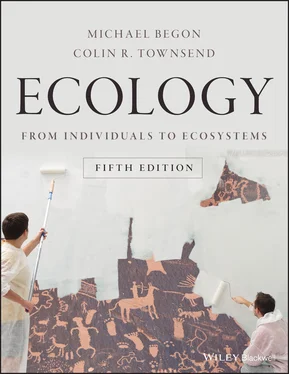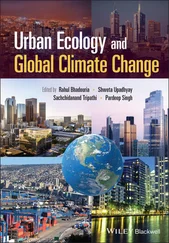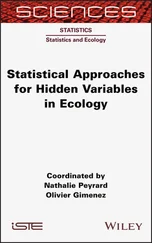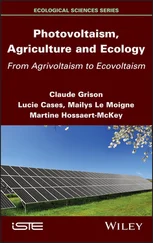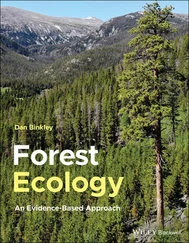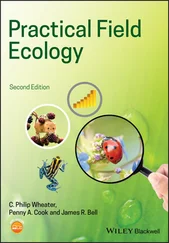
Figure 3.13 Roots as foragers.(a) The root system developed by a plant of wheat grown through a sandy soil containing a layer of clay. Note the responsiveness of root development to the localised environment that it encounters. (b–j) Profiles of root systems of plants from contrasting environments. (b–e) Northern temperate species of open ground: (b) Lolium multiflorum , an annual grass; (c) Mercurialis annua , an annual weed; and (d) Aphanes arvensis and (e) Sagina procumbens , both ephemeral weeds. (f–j) Desert shrub and semishrub species, Mid Hills, eastern Mojave Desert, California.
Source : (a) Courtesy of J.V. Lake. (b–e) From Fitter (1991). (f–j) Redrawn from a variety of sources.
The root system that a plant establishes early in its life can determine its responsiveness to future events. Where most water is received as occasional showers on a dry substrate, a seedling that puts its early energy into a deep taproot will gain little from subsequent showers, but in an environment in which heavy rains fill a soil reservoir to depth in the spring, followed by a long period of drought, that taproot may guarantee continual access to water. Indeed, it seems that the placement of roots with respect to water and especially nutrient availability is most important in the earlier stages of a plant’s life. Later there is much greater reliance on stored resources in overcoming local or temporary shortages (de Kroon et al ., 2009).
the rise in global levels
The CO 2used in photosynthesis is obtained almost entirely from the atmosphere, where its concentration has risen from approximately 280 μl l −1in 1750 to about 411 μl l −1as we write (2018) and is still increasing by 0.4–0.5% per year (see Figure 21.22).
variations beneath a canopy
Concentrations also vary spatially. In a terrestrial community, the flux of CO 2at night is upwards, from the soil and vegetation to the atmosphere; on sunny days above a photosynthesising canopy, there is a downward flux. Nonetheless, above a vegetation canopy, the air becomes rapidly mixed. The situation is quite different, however, within and beneath canopies. Changes in CO 2concentration in the air within a mixed deciduous forest in summer, in Sapporo, Japan, are illustrated in Figure 3.14. Throughout the day, there was a gradient of decreasing concentration from the ground (0.5 m) to the upper canopy (24 m), reflecting the shifting balance between its production through respiration and its utilisation in photosynthesis. Indeed, an earlier study by Bazzaz and Williams (1991) had recorded levels as high as 1800 μl l −1near the ground, as a result of rapid decomposition of litter and soil organic matter. The gradient was steepest, and concentrations generally higher, during the night than during the day, presumably because the respiration of decomposers, especially, is relatively insensitive to the diurnal cycle. In winter, in the absence of leaves, there was no detectable variation in CO 2concentration with height.

Figure 3.14 The change in atmospheric CO 2 concentration with height in a forest canopyin Sapporo, Japan at night and in the day. The bar is the maximum SE.
Source : After Koike et al . (2001).
That CO 2concentrations vary so widely within vegetation means that plants growing in different parts of a forest will experience quite different CO 2environments. Indeed, the lower leaves on a forest shrub will usually experience higher CO 2concentrations than its upper leaves, and seedlings will live in environments richer in CO 2than mature trees.
variations in aquatic habitats
In aquatic environments, variations in CO 2concentration can be just as striking, especially when water mixing is limited, for example during the summer ‘stratification’ of lakes, with layers of warm water towards the surface and colder layers beneath. Some examples from a study in Estonia are shown in Figure 3.15. At one extreme was the shallow Lake Äntu Sinijärv, which is supersaturated with CO 2(CO 2concentration higher than would result from equilibration with atmospheric CO 2) as a result of the high concentrations of bicarbonate ions in the water flowing into it. Here, there was usually virtually no vertical stratification of CO 2. Lake Saadjärv was deeper and thermally stratified and also had very high CO 2concentrations, but in this case there was strong CO 2stratification in the deeper layers. And finally, Lake Peipsi was a very large lake compared with the others (3555 km 2compared with <10 km 2for the others), similar in depth to Lake Äntu Sinijärv, but with very much lower CO 2concentrations overall. In this case, vertical stratification of CO 2concentrations led consistently to levels in the upper layers where the concentrations were lower than saturation, such that the lake was a sink for atmospheric CO 2, whereas the other two lakes were net CO 2emitters.

Figure 3.15 Concentrations of CO 2 vary, variably, with depth in Estonian lakes.The profiles with depth of CO 2concentration over a number of days (different in each case) in three lakes in Estonia, as indicated. Note that the colour‐coding varies between the lakes to reflect their different concentration ranges, and that their depths are different.
Source : After Laas et al . (2016).
In aquatic habitats, especially under alkaline (high pH) conditions, dissolved CO 2tends to react with water to form carbonic acid, which in turn ionises, such that 50% or more of inorganic carbon in water may be in the form of bicarbonate ions. Indeed, the Estonian lakes highlight how, in many cases, overall concentrations of CO 2may be highly supersaturated. This may seem to suggest that aquatic plants will only rarely be limited by the availability of CO 2, but in fact they commonly are limited, due to the low rates of CO 2diffusion in water, and around half of aquatic plants are able to use bicarbonate ions as an alternative source of dissolved organic carbon. However, since bicarbonate must ultimately be reconverted to CO 2for photosynthesis, this is likely to be less useful as a source of inorganic carbon, and in practice, many plants will be limited in their photosynthetic rate by the availability of CO 2. We see an illustration of this in Figure 3.16. Ten species of aquatic plants, all capable of using bicarbonate as a source of CO 2, were grown in two culture conditions, both with the same overall concentration of dissolved organic carbon (0.85 mM). In one case (low‐C) the water was in equilibrium with the surrounding air (saturated) and so the contribution of CO 2itself to this was small (0.012 mM). But in the other case (high‐C) the initial concentration, largely from bicarbonate ions, was much lower (0.40 mM) but gaseous CO 2was continually added to the water, supersaturating it, and raising the overall concentration to the low‐C level. All 10 species grew faster under the high‐C conditions ( Figure 3.16a), apparently as a result of elevated growth efficiencies at higher concentrations of CO 2, since the low‐C plants were investing more in, for example, leaf nitrogen ( Figure 3.16b), enabling them to make more of the limited CO 2resource available to them. Even for these bicarbonate users, bicarbonate is good but CO 2is better.
Читать дальше
